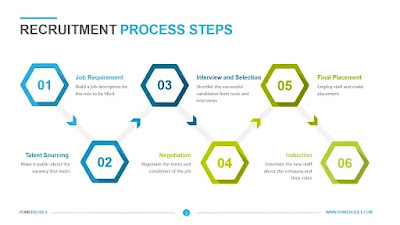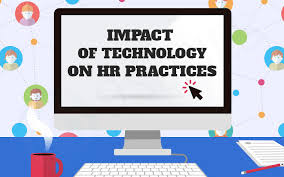Harnessing Technology: Revolutionizing Recruitment, Training and Skill Development
Finding enough “good” candidates is always the biggest problem when we talk to organizations. For recruiting teams who struggle to handle mass recruitment, this is a major headache. Mass recruitment refers to the process of hiring a significant number of individuals within a particular time frame. This approach is often utilized when a company is rapidly growing or requires many new employees simultaneously, such as when opening a new branch or during peak periods in service industries. In contrast to low volume hiring, the mass recruitment procedure necessitates more preparation work and takes longer to choose candidates. Because of this, focusing more on hiring speed, automation, and efficiency is necessary for mass hiring, especially when it comes to getting rid of manual process that become unworkable at scale (Cappelli P,2001).
The solution to this will be supportive technology
software and applications, which will simplify the hiring process for both the
company and the candidates.
Speed and Efficiency
Let’s say you are the head of recruitment, and one day,
your boss announces that a new branch will open early in the following year.
It’s exciting news that shows how well-run and quickly expanding the company
is. However, you are aware that the new branch will need to hire hundreds of
new employees quickly, and your boss will not tolerate any compromise on the
quality of the candidates. Then the most effective solution that can meet the
criteria of time and quality is definitely mass hiring.
This is the proper hiring procedure that aids in selecting the best candidates. However, these steps can be streamlined with the help of recruitment automation, which is crucial when hiring large numbers of candidates. Recruitment automation uses digital technologies to speed up the hiring process by automating various tasks and workflows, increasing productivity and assisting recruiters in saving time, money, and resources while improving the overall quality of candidates (Cappelli P,2001).
Access to a Wider Pool of Candidates
Reaching a large number of candidates is not too
difficult due to the popularity of social networking sites and recruitment
websites. According to Jobvite, while the average job posting attracts less
than 50 candidates, high-volume hiring draws in more than 250 candidates.
Every time a new position becomes available, the recruiting team cannot simply search for new applicants. Past candidates’ profiles contain useful information that recruiters should also consider (Mek). The larger candidate pool gives recruiters more opportunities to gather pertinent information, enhancing the effectiveness of your hiring decisions. Mass hiring can achieve rapid employee growth, but there are certain risks involved, most notably negative candidate experiences. However, with careful planning, these problems can be avoided (Ashley Mccann 2023).
Define Your Criteria
If you first define the objectives of your organization, you can save a lot of time during the hiring process. Explain to the hiring team the qualities you’re looking for in candidates, such as skills, work experience, background education, or even personality and attitude. You can also create a screening template that specifies the inquiries you’ll make and the kinds of responses you want from applicants (Mishra A & Akman I, 2010).
As with any hiring process, each position must have a detailed job description. If you are recruiting multiple people for the same job, this process becomes much easier. With the final description, you are ready to provide potential candidates with a clear picture of the job.
Source: https://www.bing.com/images/search
Source: https://www.bing.com/images/search
Use Technology to Streamline the Process
Technical recruitment involves defining job requirements,
sourcing tech candidates, screening and assessing their skills through
technical and behavioral interviews, making hiring decisions. Correspondingly,
technical recruiters are specialized in working with tech roles, meaning
software developers (front-end, back-end, and full-stack), ML & AI
developers, DevOps specialists, Data analysts, etc.
Technology plays a significant role in enhancing the recruitment process by making it faster, more efficient, and data driven. Recruitment software, such as Applicant Tracking Systems (ATS), automates many manual tasks involved in hiring, such as posting job openings to multiple platforms, screening resumes, and managing candidate data. AI-driven tools help in identifying the best candidates by analyzing large volumes of applicant data and matching skills and experience with job requirements. Video interviewing platforms allow employers to conduct interviews remotely, saving time and travel costs (Schweyer A,2010). Additionally, recruitment marketing software helps build a strong employer brand by creating targeted campaigns and content to attract top talent (Mishra A & Akman I 2010). Data analytics tools enable HR departments to track the success of hiring strategies, measure time-to-hire, and make informed decisions about recruitment processes. These technologies not only improve efficiency but also enhance the candidate’s experience by providing a smoother and faster application process.
Source: https://www.bing.com/images/search
Technology is also
changing how HR managers support people in managing their careers and guide,
train, and develop them. Because of the Internet, managers may provide their
staff members with on-demand web-based training and development whenever they
have the time to devote to it. Online courses for management development and
language learning, for instance, are becoming more and more popular (Chris Khouri 2022). Through
teleconferencing technology, such as webinars or video streaming, workers may
train and cooperate in groups regardless of where they are.
1. E-Learning Platforms: Online courses and training modules enable employees to learn at their own pace and convenience.
2. Virtual Reality (VR) Training: VR can simulate real-world scenarios for training purposes, providing immersive and interactive learning experiences.
3. Learning Management Systems (LMS): These systems help manage, deliver, and track training programs. They provide a centralized platform for all training materials and records.
4. Gamification: Incorporating game elements into training programs can increase engagement and motivation among employees.
5. Enhanced Communication: Tools like Slack, Microsoft Teams, and Zoom improve communication and collaboration within teams
Technology plays a significant role in enhancing training
programs by making learning more accessible, flexible, and personalized. Here’s
how technology helps in training:
- E-Learning
Platforms:
Online learning platforms allow employees to access training materials and
courses anytime, anywhere, enabling them to learn at their own pace. This
flexibility is especially important for remote workers or those in
different time zones.
- Learning
Management Systems (LMS): LMS software helps organizations manage, track, and
deliver training content. HR can use LMS to assign courses, track employee
progress, and assess knowledge through quizzes and certifications. It
centralizes training materials and provides easy access to learning
resources.
- Interactive
Content and Simulations: Technology enables the creation of interactive
training modules, simulations, and virtual environments where employees
can practice skills in a risk-free setting. For example, software
simulations can train employees on complex systems or customer service
scenarios.
- Mobile
Learning: With
the rise of mobile devices, employees can access training content on their
smartphones or tablets. This "on-the-go" learning allows
employees to engage with training materials during commutes or downtime,
making learning more integrated into their daily routine.
Here are some keyways technology is helping:
Recruitment
Source: https://www.bing.com/images/search1. Automated Screening: AI-powered tools can quickly screen resumes and applications, identifying the best candidates based on predefined criteria. This reduces the time and efforts required for initial candidate selection
2. Applicant Tracking Systems (ATS): It help manage the entire recruitment process, from posting job openings to tracking candidate progress and communication.
3. Virtual Interviews: Video conferencing tools allow for remote interviews, making it easier to connect with candidates from different locations.
4. Social Media Recruiting: Platforms like LinkedIn, Facebook, and even Snapchat are used to reach a broader audience and engage with potential candidates
Training
Source: https://www.bing.com/images/search
1. E-Learning Platforms: Online courses and training modules enable employees to learn at their own and convenience.
2. Virtual Reality (VR) Training: VR can simulate real-world scenarios for training purposes providing immersive and interactive learning experiences.
3. Learning Management Systems (LMS): These systems help manage, deliver, and track training programs. They provide a centralized platform for all training materials and records.
4. Gamification: Incorporating game elements into training programs can increase engagement and motivation among employees.
5. Enhanced Communication: Tools like Slack, Microsoft Teams, and Zoom improve communication and collaboration within teams
Conclusion:
The role of technology in training and development is increasingly getting significant in recent years. With the recent advances in AI and virtual reality, learners now have access to a wide range of tools and resources that can enhance their learning experience. Whether it's by means of online courses, virtual simulations, or interactive tutorials, modern technology has revolutionized the way we learn and grow. As we continue to embrace these technological advancements, it's crucial for organizations and educators to adapt and integrate them into their training programs to ensure that learners are fully equipped with the necessary skills they need to succeed in the industry and in their respective domains.
To keep your learners engaged we have corporate eLearning solutions that offer personalized learning experiences tailored
to their individual needs and preferences. These solutions also provide
real-time feedback and progress tracking, allowing learners to monitor their
own growth and make necessary adjustments for continuous improvement.
By leveraging these technologies, HR
departments can enhance their recruitment and training processes, leading to
better hiring decisions and more effective employee development.










Absolutely! Technology is transforming training and development. With AI and virtual reality, learners can engage in immersive experiences that enhance comprehension and retention. Organizations and educators must adopt these innovative tools to prepare learners for today’s workforce. By leveraging online courses and virtual simulations, we can create dynamic learning environments that empower individuals to excel. The future of training is digital, and we’re just starting to unlock its potential!
ReplyDeleteThank you for your enthusiastic response! I completely agree that technology is revolutionizing training and development. The immersive experiences provided by AI and virtual reality indeed strengthen comprehension and retention, making learning more effective and engaging. See how online courses and virtual simulations create active learning environments. These tools not only prepare learners for today’s workforce but also empower them to excel in their careers, that as we continue to unlock the potential of digital training, it’s important to address the challenges that come with it, such as ensuring accessibility for all learners and managing the costs associated with implementing these technologies. By doing so, we can create a more effective learning landscape
DeleteBy addressing tools like ATS, AI-driven screening, e-learning, and VR training, I understand you're providing a practical and relevant analysis of technological impacts on HR processes. The examples add real-world applicability, making it relatable for HR professionals.
ReplyDeleteAlthough, from an academic point of view, a critical analysis of the challenges can improve the narration. For instance, addressing the ethical implications of AI in recruitment such as potential biases in algorithmic screening, would provide justifications. Like i mentioned in the blog https://jenarthanj.blogspot.com/2024/11/balancing-efficiency-and-ethical.html (Balancing Efficiency and Ethical Considerations in the Implementation of Artificial Intelligence in Human Resource Practices)
Moreover, You can also add limitations like the upfront costs of VR training and the learning curve for employees adapting to new technology.
Overall, the blog is insightful but could benefit from a more balanced view by incorporating potential drawbacks.
Thank you for your feedback, I’m glad you found the analysis of ATS, AI-driven screening, e-learning, and VR training practical and relevant. Indeed, the ethical implications of AI in recruitment, such as potential biases in algorithmic screening, are crucial considerations. I appreciate your reference to your blog post on balancing efficiency and ethical considerations in AI implementation. It’s a valuable resource that highlights the importance of addressing these ethical concerns.
DeleteThank you again for your constructive feedback. I’ll certainly incorporate these aspects to provide a more comprehensive analysis in future posts.
you make a really good point about addressing a balance between technology and human engagement in recruitment process. even if AI can speed up and improve hiring process there must be a human touch in cultural aspects and in final decision making. thank you for your insights
ReplyDeleteThank you for your insightful feedback.
DeleteThis article provides an insightful and comprehensive overview of how technology is revolutionizing recruitment and employee training. It clearly highlights the challenges of mass recruitment and the critical role of automation and AI in improving efficiency, speed, and candidate quality. The emphasis on tools like Applicant Tracking Systems (ATS), virtual interviews, and social media recruiting is spot on, as these technologies are essential in scaling up recruitment efforts without compromising on quality.
ReplyDeleteMoreover, the discussion on e-learning platforms, VR training, and gamification is a fantastic reminder of how modern technology is transforming employee development. By offering flexible, engaging, and personalized learning experiences, organizations can significantly enhance employee skills and overall performance.
Overall, this article is a great resource for HR professionals and organizations looking to leverage technology to streamline their hiring processes and enhance employee training programs. Well-written and very informative!
Thank you for your detailed and encouraging feedback. It’s exciting to see how technology is revolutionizing recruitment and employee training, making processes more efficient and improving candidate quality. The role of tools like Applicant Tracking Systems, virtual interviews, and social media recruiting is indeed crucial for scaling up recruitment efforts without compromising on quality. I’m glad you appreciated the discussion on e-learning platforms, VR training, and gamification, as these technologies are transforming employee development by offering flexible and engaging learning experiences.
DeleteThank you for highlighting these innovative HRM functions! E-learning platforms, VR training, LMS, gamification, and enhanced communication tools like Slack, Microsoft Teams, and Zoom significantly boost efficiency, engagement, and collaboration, making companies more effective and cost-efficient in achieving their goals. Great points!
ReplyDeleteThank you for your feedback! I’m glad you found the discussion on innovative HRM functions valuable. E-learning platforms, VR training, LMS, and gamification indeed play a crucial role in boosting efficiency and engagement.
Delete